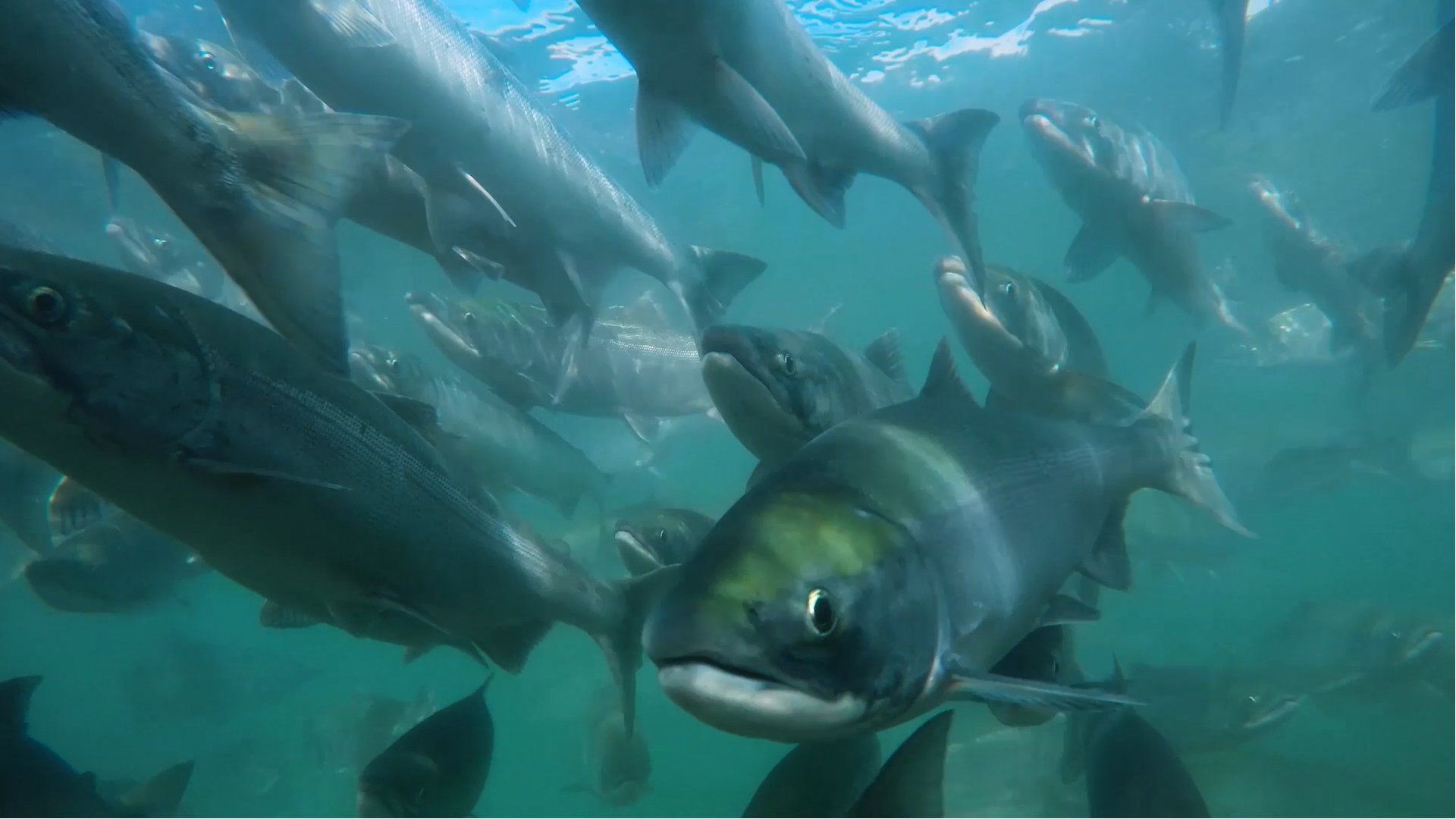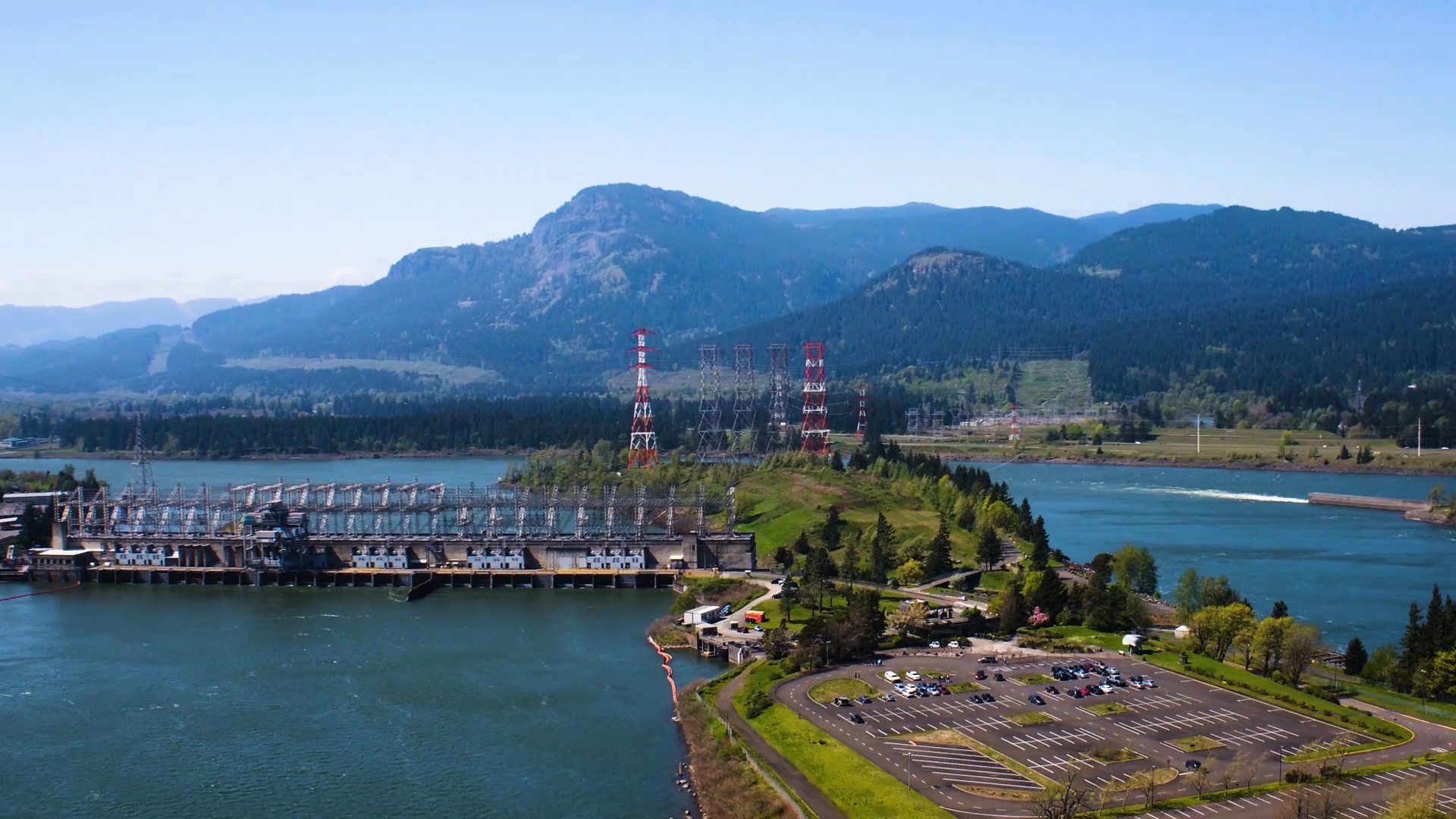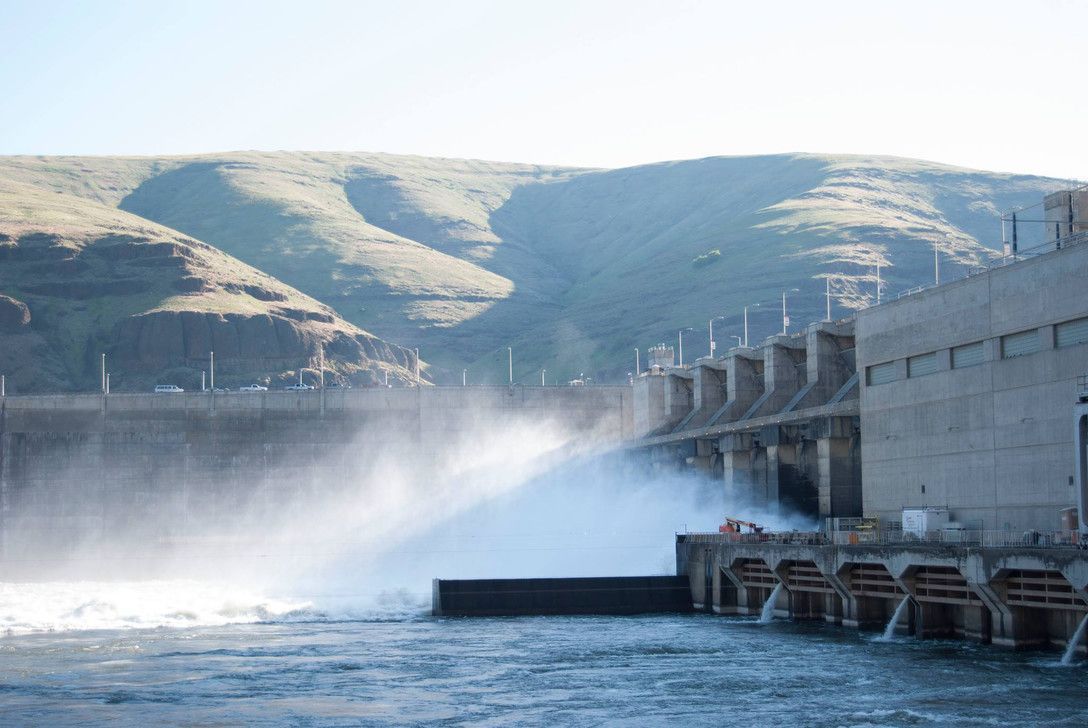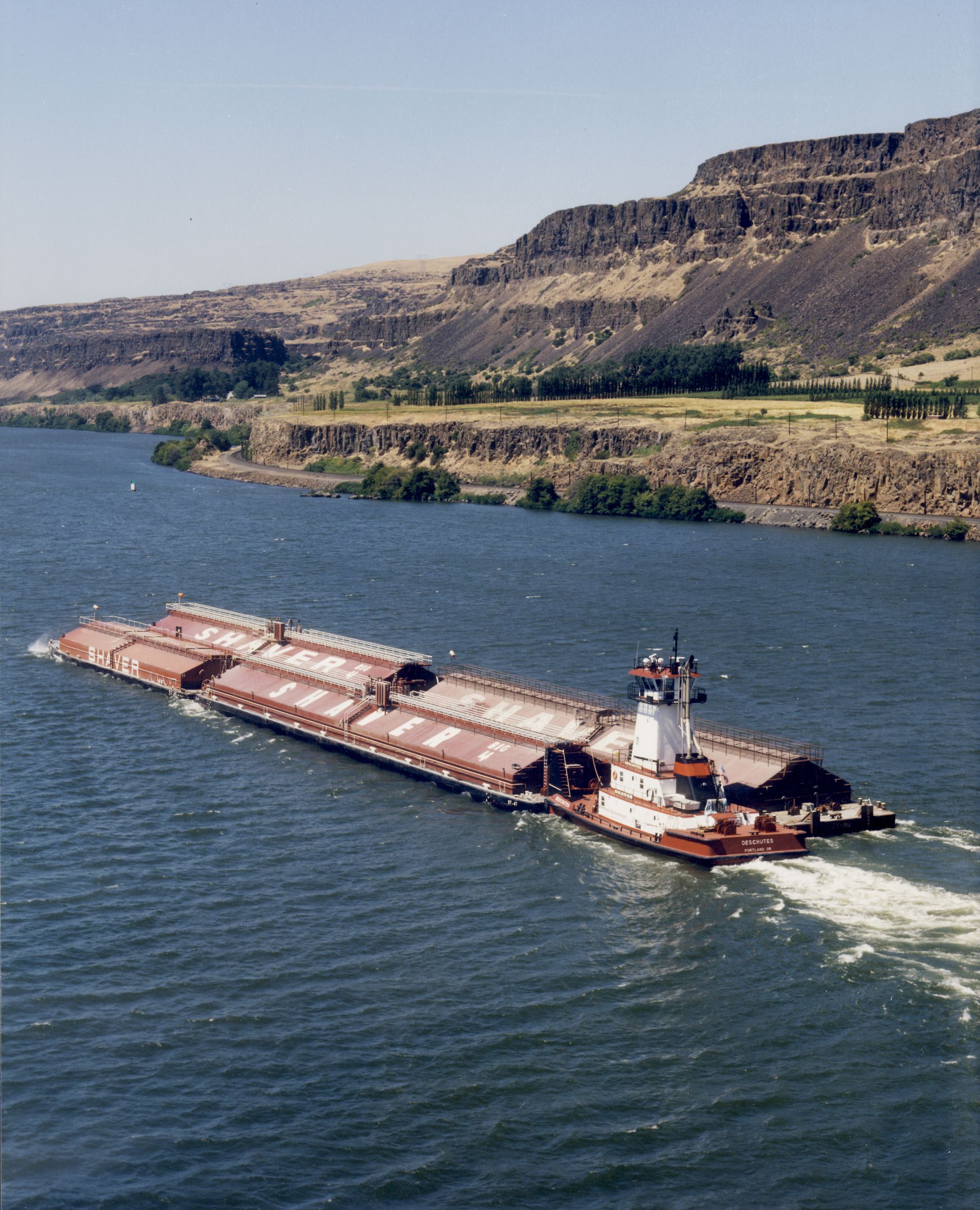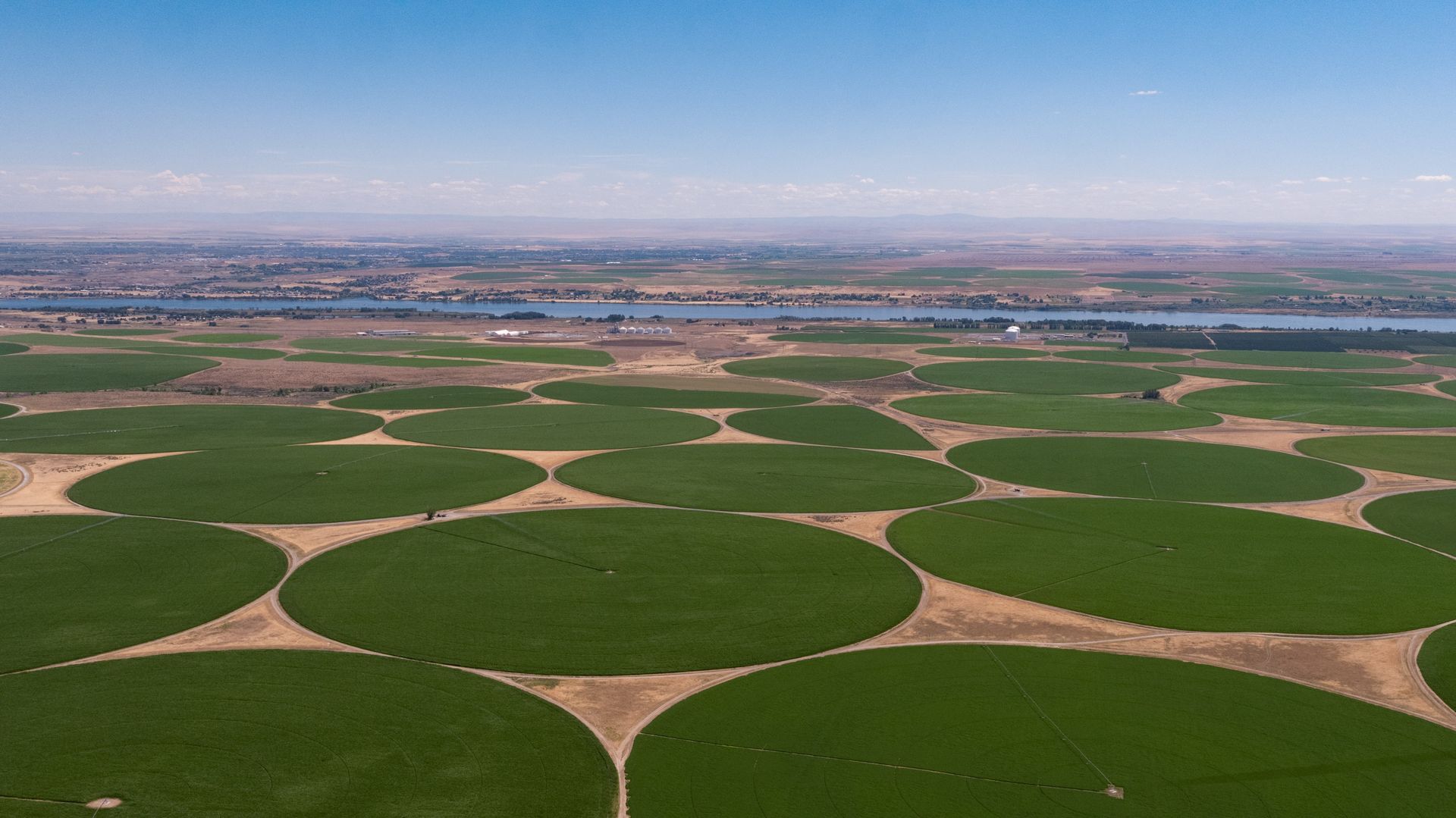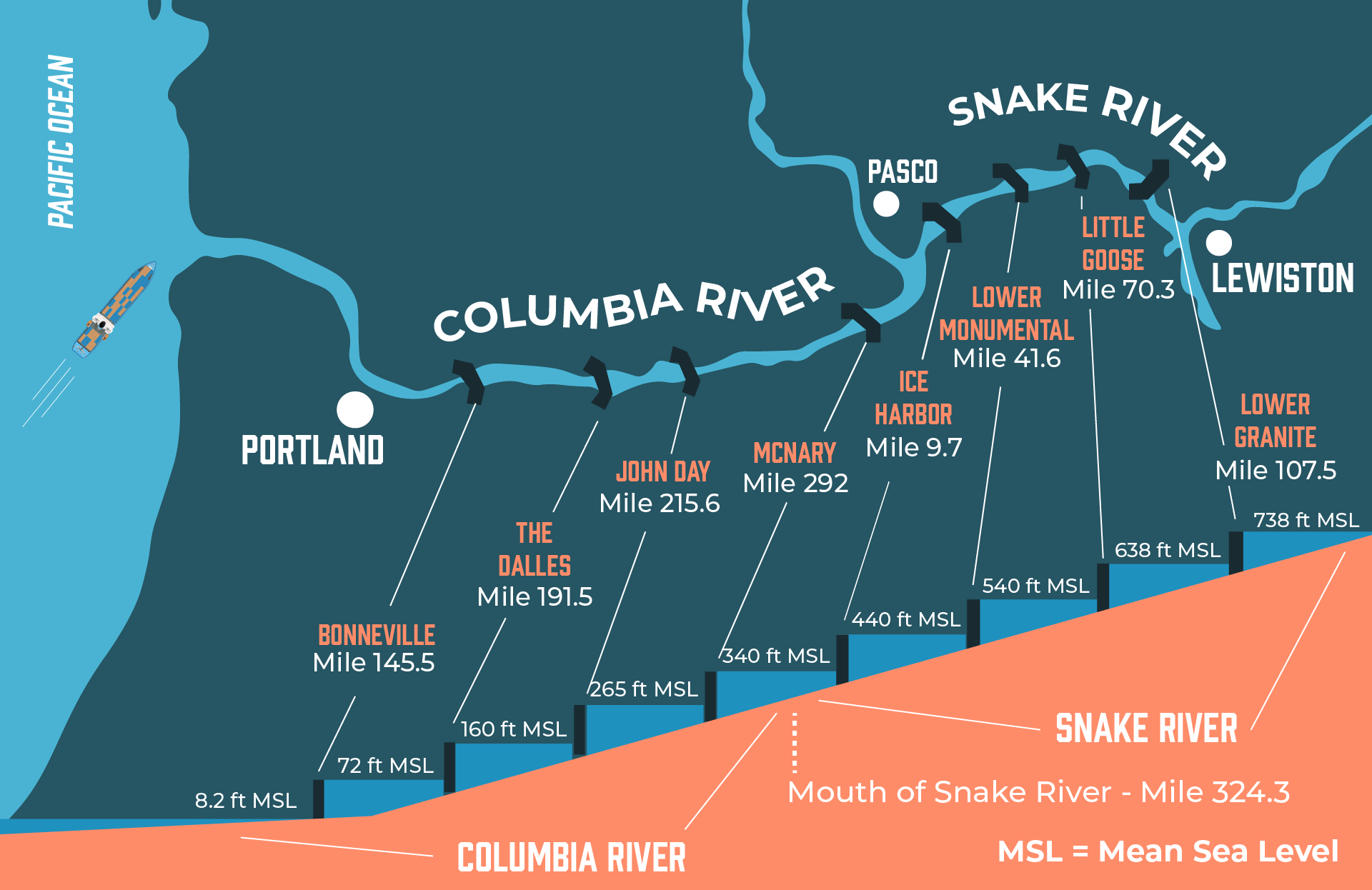The system of navigation locks and hydroelectric dams on the Columbia and Snake rivers has been the lifeblood of our region for over 80 years. Supporting agriculture, enabling efficient transportation, and providing carbon-free energy, the Columbia-Snake River System is indispensable to millions of people. But what if that infrastructure was no longer there? More than three decades ago, we caught a glimpse of that possibility during a test drawdown of the Snake River.
The 1992 drawdown test gave a literal preview into the potential devastating impacts of permanent dam removal.
The U.S. Army Corps of Engineers (Corps) at times lowers the water level of reservoirs for specific purposes. This could include managing flood risks, facilitating maintenance and repairs, or enhancing environmental conditions. In 1992, the Corps conducted a test drawdown on the Snake River to study the effects of reduced water levels on salmon migration and reservoir stability. This drawdown, which lasted nearly a month, lowered water levels by more than 20 feet, causing significant impacts on the surrounding infrastructure, environment, and economy:
- Navigation became impossible for many vessels, leaving both commercial and recreational boaters unable to access or travel through the area.
- Marinas, shipping terminals, and much of the infrastructure of area ports were rendered useless, leading to a significant reduction or complete halt in operations.
- Over 35,000* fish were stranded and subsequently died due to the lowered water levels, and vital spawning habitats became inaccessible.
- The region faced economic losses from halted shipping operations, decreased tourism, and damaged infrastructure.
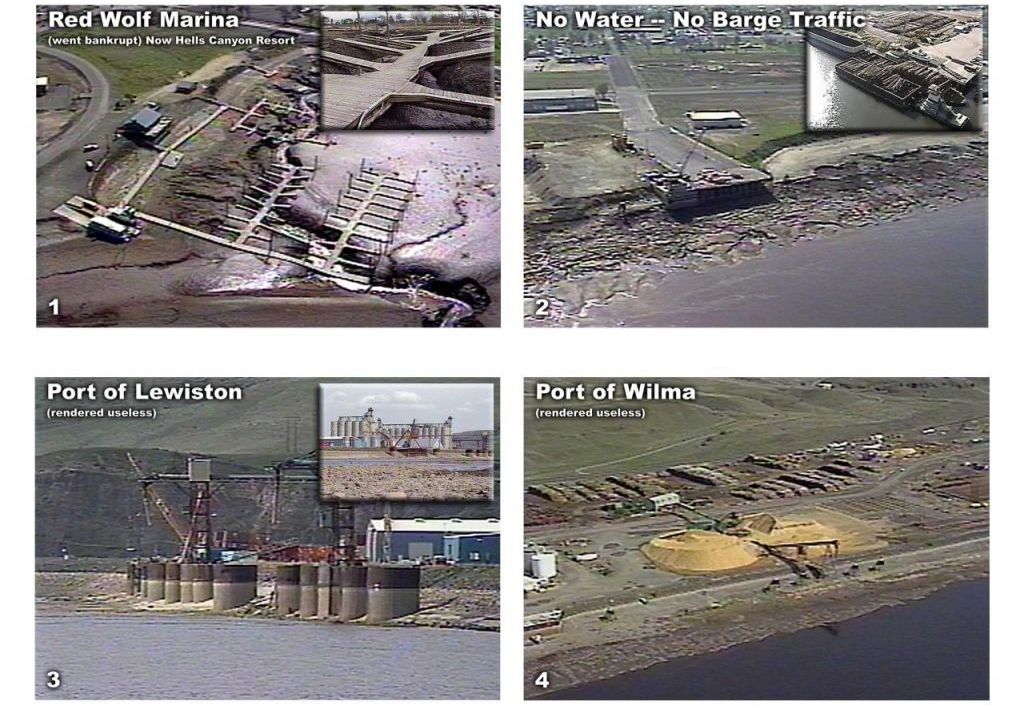
In the report after the test was completed, the Corps found that the drawdown caused significant impacts to fish habitat, including restricted access to upland spawning areas and some tributaries. Many channels also became unnavigable due to low water levels. Only one area was observed to be suitable for spawning, while all other sites were found to have characteristics considered unsuitable for spawning by salmon.
Over 35,000* fish were stranded and died due to lowered water levels, and vital spawning habit became inaccessible.
The Port of Lewiston, located 465 miles from the Pacific Ocean, was among the most impacted by the 1992 drawdown. As the west’s farthest inland seaport, it serves as a gateway to shipping for much of the inland United States. Along with its neighbors, the ports of Clarkston and Wilma and their surrounding communities, the Port of Lewiston relies on the river system infrastructure to support essential operations. Throughout this drawdown, the Port of Lewiston documented through photos the impacts of lowered water levels.
This test gave us a sobering glimpse into a future without these dams, not just for these communities but for the entire Pacific Northwest. For the City of Lewiston, which has invested over $80 million in water and wastewater systems dependent on current water levels, the removal of dams would necessitate a complete redesign of these vital systems. Local industries would face severe operational and shipping losses, risking economic decline. Additionally, without the control of dams, the swift-moving water would cause levees and bridges to buckle and deteriorate, leading to millions in damage to critical infrastructure.
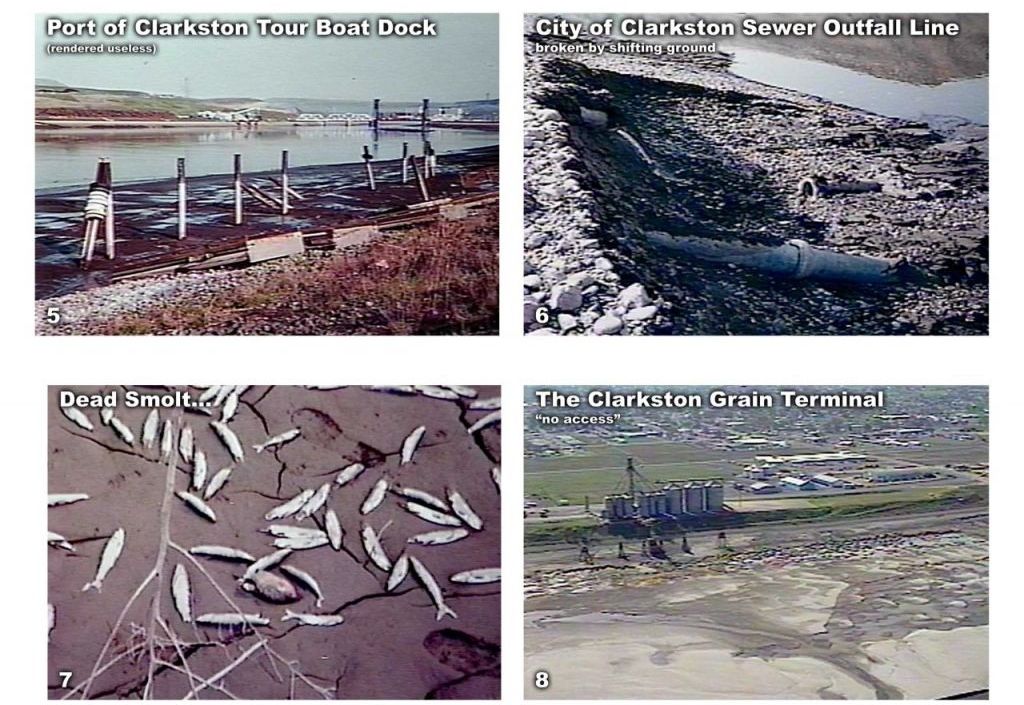
Since that drawdown over thirty years ago, multiple studies have forecasted the consequences of permanent dam breaching, with far-reaching effects beyond the Pacific Northwest. Breaching the dams on the lower Snake River would obliterate river navigation to Lewiston, forcing goods transported by barge to shift to road or rail. This shift would impact about 10% of all U.S. wheat exports that rely on the lower Snake River dams to reach Portland- and Vancouver-based barges, potentially tipping the entire grain market on its head and causing wheat prices to skyrocket. Furthermore, this shift would make traffic congestion worse by adding thousands of trucks to the roads and another 1.2 million tons of emissions into the atmosphere annually.
Breaching dams would lead to disastrous effects on local economies, global food supplies, and environmental health.
The 1992 Snake River test drawdown offered a glimpse into a future without the essential dams and locks on the Columbia and Snake rivers. It underscored the urgent need to preserve the Columbia-Snake River System, as breaching the dams would lead to disastrous effects on local economies, global food supplies, and environmental health. The necessity to protect and maintain this infrastructure has never been more pressing.
Source: Impacts of the Snake River drawdown experiment
Source: Article March 5, 1994
*Note: values are estimated
Share your river value
We all benefit from the federal system of dams and locks on the Columbia Snake River System. Whether you appreciate clean and reliable electricity, irrigation for farms, or affordable and fuel-efficient shipping, the Columbia Snake River System connects the Pacific Northwest to the world and keeps our region strong and balanced.
We’re looking for personal stories to share from our community about how the River System supports your life. If you’re a resident, worker or business owner who appreciates the public goods created and supported by the Columbia Snake River system, we want to share your story!
